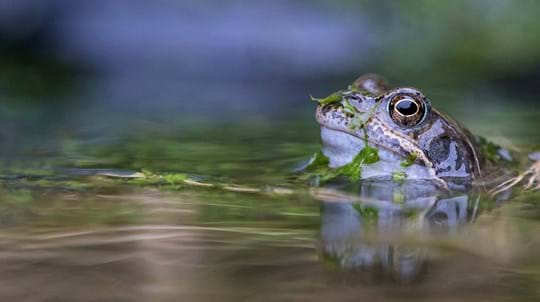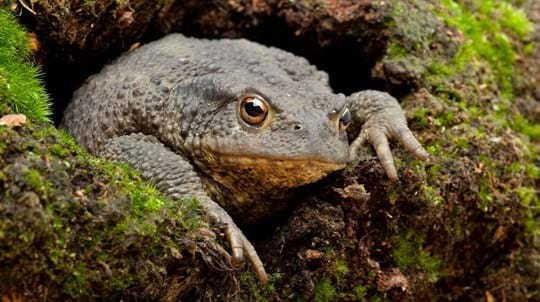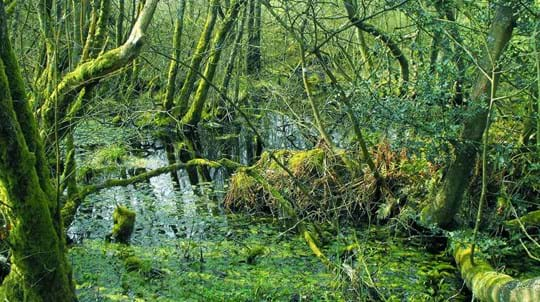
Life cycle of a frog: how do amphibians reproduce?
Rachel Hoskins • 09 Apr 2019
This time of year is perfect for spotting amphibians on their way to mate. Find out how they attract mates, reproduce and develop.

Content editor
Now it's spring, you might spot some frogs near your local ponds and damp spots. They're emerging from hibernation and heading for ponds to find a mate and breed. We've pulled together some top facts to get you up to speed.
Small frogs eat insects such as flies and moths, as well as snails, slugs and worms. They use long tongues and sticky saliva to catch prey that passes them by.
Tadpoles eat algae in the ponds they grow in. As they grow, they feed on plants and small insects. If there isn't enough food available they might even eat their fellow tadpoles.
Frogs can actually breathe through their skin. It's very thin, allowing oxygen to pass through when the frog is underwater. They can also breathe through the lining of their mouths. They do have lungs, but only use them when they need to top up their oxygen levels.
Tadpoles breathe through gills, like fish, but lose these as they mature into frogs.
A frog can stay underwater from anywhere between a few minutes to a few months! It depends how active they are. A frog that's moving around a lot may not get enough oxygen through its skin while underwater so it will have to come up for air. However, a hibernating frog may stay buried in the mud at the bottom of a pond for the whole winter.
No, it's always best to leave creatures where you find them. Moving frogspawn form one pond to another could spread disease and disrupt their development.
Instead, find a pond close to you and visit regularly to see frogspawn develop in its natural habitat.

Rachel Hoskins • 09 Apr 2019
This time of year is perfect for spotting amphibians on their way to mate. Find out how they attract mates, reproduce and develop.
If you want to attract frogs to your garden, a frog pond is the way to go. You’ll need to be within 100 metres of an existing habitat, but frogs rely on lots of options for somewhere to settle so you might get lucky.
You’ll need:
Instructions:
If you’ve noticed frogs in your garden, it’s most likely that they have plenty of food about already. Make sure to not put out slug pellets, primarily because they can harm frogs, but also because frogs will do the pest control for you!
It helps to make sure a patch in your garden grows wild and is full of native plants to attract as many tasty insects as possible, as well as providing shelter for any amphibian visitors.
The Nature’s Calendar project tracks the effects of weather and climate change on wildlife across the UK – its records date all the way back to 1736! First sightings of frogspawn and tadpoles are among 69 wildlife species recorded for the project.
Join Nature’s Calendar to record what you see – every record is crucial and valid. The data recorded helps us to better understand the effects of climate change and other patterns in the natural environment. By taking just a few minutes to share your sightings, you'll be adding to hundreds of years' worth of important data. We couldn't do this work without you!

Help monitor the effects of climate change on wildlife near you. Your records contribute to a growing body of evidence on global warming.
Add your wildlife recordings
Trees woods and wildlife
Smooth. Slick. Slippery. These quick-jumping masters of disguise are regular visitors to garden ponds. Learn some interesting facts about them.

Blog
Charlotte Varela • 23 Feb 2024

Trees woods and wildlife
Wild, transient, boggy and rare. Wet woodlands are now some of our least common wooded habitats. Learn about these special places and why they are so important to wildlife.